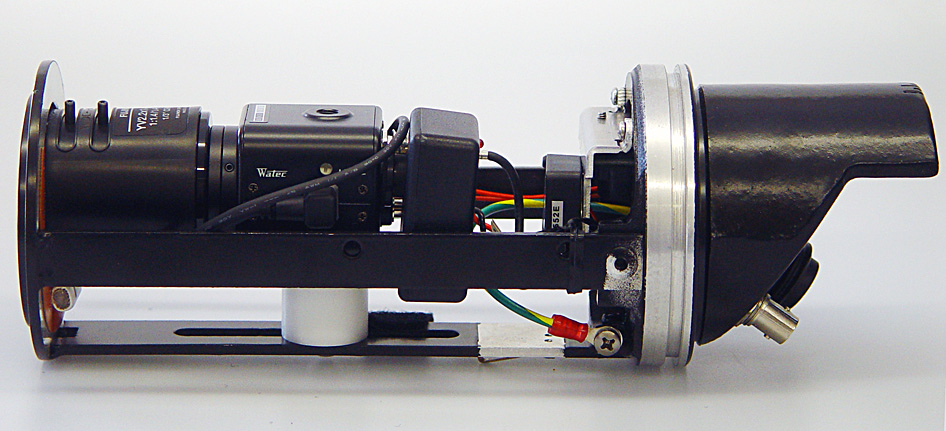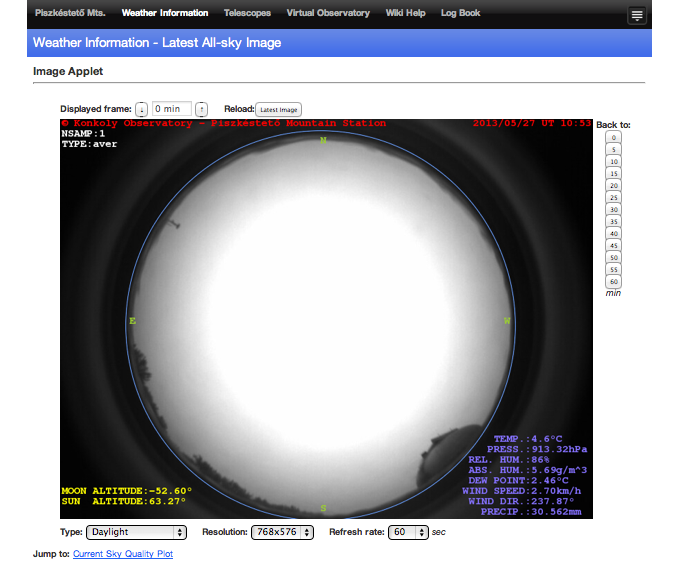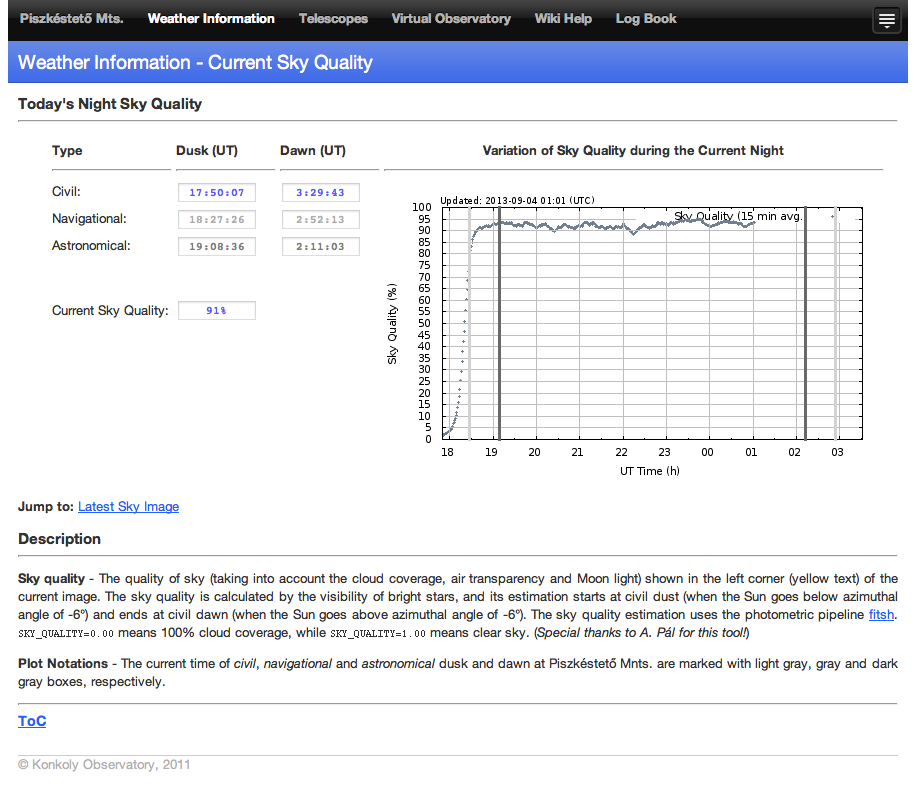The operation of telescopes requires accurate and real-time data about the ambient weather conditions and the actual cloud coverage. In order to determine the actual cloud coverage above the observatory a conventional solution is the installation of camera that capable aquisit night image of the whole sky, i.e. an all-sky camera. In 2010 we successfully installed an all-sky camera system at Piszkéstető Mountain Station of Konkoly Observatory. The digitized images are served to the Institutional local internet. I was assigned to design the complete hardware installation, and to develop and implement the web interface. A similar all-sky system has been installed at Gothard Observatory in 2013.
All sky camera
|
The all-sky camera is mounted to the northeast corner of the roof of the 1 m Ritchey-Chrétien-Coudé (RCC) telescope building. The camera housing is heated at some level to prevent the precipitative water vapour. We employ a Watec H2 Ultimate (CCIR) video camera for acquiring the images. A Fujinon fish-eye lens with auto-iris and a focal ratio of f/1.4 is mounted to the camera. This camera utilizes an adaptive internal gain in the range of 0 − 60 dB and has a constant acquisition rate of 25 frm/s. All in all, this setup provides a field of view with an angular diameter of 150 deg. The stream of analog video signal captured by the camera is converted to digital images by an AXIS 241S video server located in one of the RCC laboratory rooms. This video server provides the current greyscale image in JPEG format with an effective resolution of 768 × 576 pixels via TCP/IP and HTTP protocols. |
 All-sky camera housing. 
All-sky camera housing. |
|
The 768x576 pixel resolution digital images are stacked continuously by a computer. About 200 images are averaged during the night between dusk and dawn, when the Sun's altitude is below -6°. During the day time no averaging is required. Four different type of images are generated: raw image without any correction, Daylight type; dark corrected image, Night type; gamma corrected image with gamma=0.8, Daylight (gamma) type; and dark and gamma corrected with gamma=1.4, Night (gamma) type. With the help of the web interface (see on the right), the observer can navigate images taken during the previous hour, and select the appropriate type. The images aquisited during 24h are archived to an avi files automatically. Archiving is initiated at every noon. |
 All-sky web interface. 
All-sky web interface. |
|
In order to measure the cloud coverage or sky quality, a simple stellar registration method is developed by András Pál. The method based on counting the number of bright stars visible. First, the expected position of the bright stars are computed using the current sidereal time and geographical coordinates. Then, the pixel coordinates of stars are evaluated from the projected coordinates using a polynomial transformation. Identification means both the estimation of centroid coordinates and a catalogue identifier cross-matching. Once an estimation of the centroid coordinates are known, even on a relatively noisy image, it is rather easy to refine them by computing the photocentre by weighting the pixel coordinates with the intensities. By dividing the number of known bright stars (above a certain magnitude limit) by the detected ones at the expected sky positions, we can determine the so-called sky quality index. The change of the sky quality index against time can be monitored by the web interface (see image left).
|
 Monitoring of the sky quality. 
Monitoring of the sky quality. |

